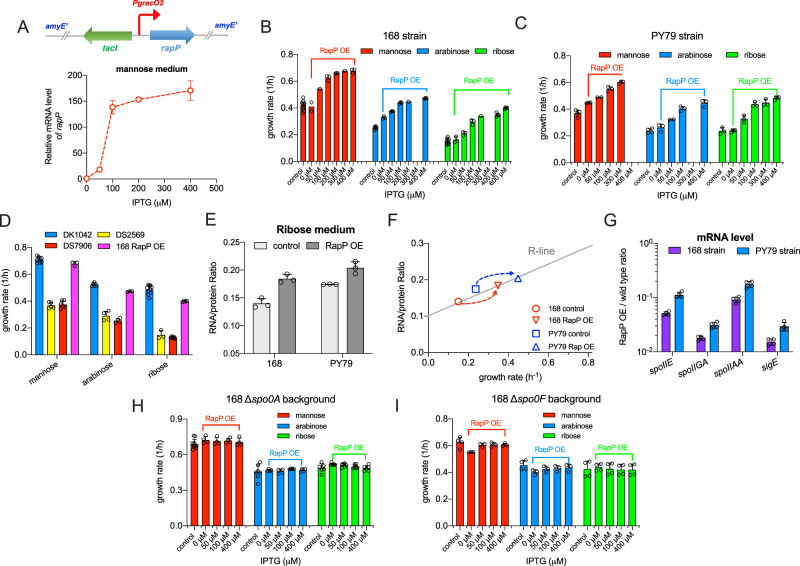Fig. 6. Introduction of rapP accelerates the growth of domesticated B. subtilis strains.
A An IPTG-inducible rapP expression cassette was integrated into the amyE locus of the domesticated B. subtilis 168 and PY79 strains to obtain the rapP-overexpressing strains. The mRNA levels of rapP could be titrated by addition of different concentrations of IPTG into the medium. Data are presented as the mean values ± standard deviations (SD) of three biological replicates (n = 3). B The effect of rapP overexpression on the growth rates of 168 strain on different carbon sources. Control refers to wild type 168 strain. Data are presented as the mean values ± standard deviations (SD) of several biological replicates (for n3). For mannose medium, n = 10, 2, 1, 3, 3, 1, 3 for control condition, 0 μM, 50 μM, 100 μM, 200 μM, 300 μM and 400 μM IPTG, respectively; for arabinose medium, n = 6, 3, 3, 3, 1, 3 for control condition, 0 μM, 50 μM, 100 μM, 200 μM, 400 μM IPTG, respectively; for ribose medium, n = 9, 3, 3, 3, 1, 4, 4 for control condition, 0 μM, 50 μM, 100 μM, 200 μM, 400 μM and 600 μM IPTG, respectively. C The effect of rapP overexpression on the growth of PY79 strain on different carbon sources. Control refers to wild type PY79 strain. Data are presented as the mean values ± standard deviations (SD) of several biological replicates (for n3). For mannose medium, n = 4, 3, 2, 3, 3 for control condition, 0 μM, 50 μM, 100 μM and 300 μM IPTG, respectively; for arabinose medium, n = 4, 3, 2, 3, 3 for control condition, 0 μM, 50 μM, 100 μM, 400 μM IPTG, respectively; for ribose medium, n = 3 for all the conditions except for 0 μM and 400 μM IPTG conditions, in which n = 4. D The growth rates of DK1042, DS2569, DS7906, and 168 RapP-overexpressing (OE) strains on various carbon sources. The data of 168 RapP OE strain correspond to the highest values of growth rates shown in Fig. 6B. Data are presented as the mean values ± standard deviations (SD) of several biological replicates. Data of DK1042, DS2569, and DS7906 are the same as shown in Fig. 1C. For the RapP OE condition, n = 3, 3, 4 for mannose, arabinose, and ribose media, respectively. E The effect of RapP overexpression on RNA/protein ratio of 168 and PY79 strains growing in ribose medium. 400 μM and 300 μM IPTG were added to the medium of 168 and PY79 RapP-overexpressing strains, respectively. Control refers to the wild type 168 and PY79 strains. Data are presented as the mean values ± standard deviations (SD) of three biological replicates (n = 3). F The correlation of RNA/protein ratio versus growth rate for the condition of RapP overexpression. Data points correspond to the data in (E). The gray R-line refers to the linear fit of Fig. 1D. G Relative mRNA levels of four sporulation genes in wild type 168 and PY79 strains compared with their RapP OE strains in ribose medium. 400 μM IPTG was added to the medium of RapP OE strain. Data are presented as the mean values ± standard deviations (SD) of four biological replicates (n = 4). H The effect of RapP overexpression on the growth of spo0A-null 168 strain on different carbon sources. Control refers to spo0A-null 168 strain without rapP integration. Data are presented as the mean values ± standard deviations (SD) of several biological replicates. For the control conditions, n = 10, 7 in mannose and arabinose media, respectively. n = 4 for all the rest conditions of mannose and arabinose media. n = 6 for all the conditions in ribose medium. I The effect of rapP overexpression on the growth of spo0F-null 168 strain on different carbon sources. Control refers to spo0F-null 168 strain without rapP integration. Data are presented as the mean values ± standard deviations (SD) of several biological replicates. n = 4 for control conditions on all three carbon sources. For the RapP overexpression conditions, n = 3 for mannose and arabinose media; n = 4 for ribose medium. Source data are provided as a Source Data file.

